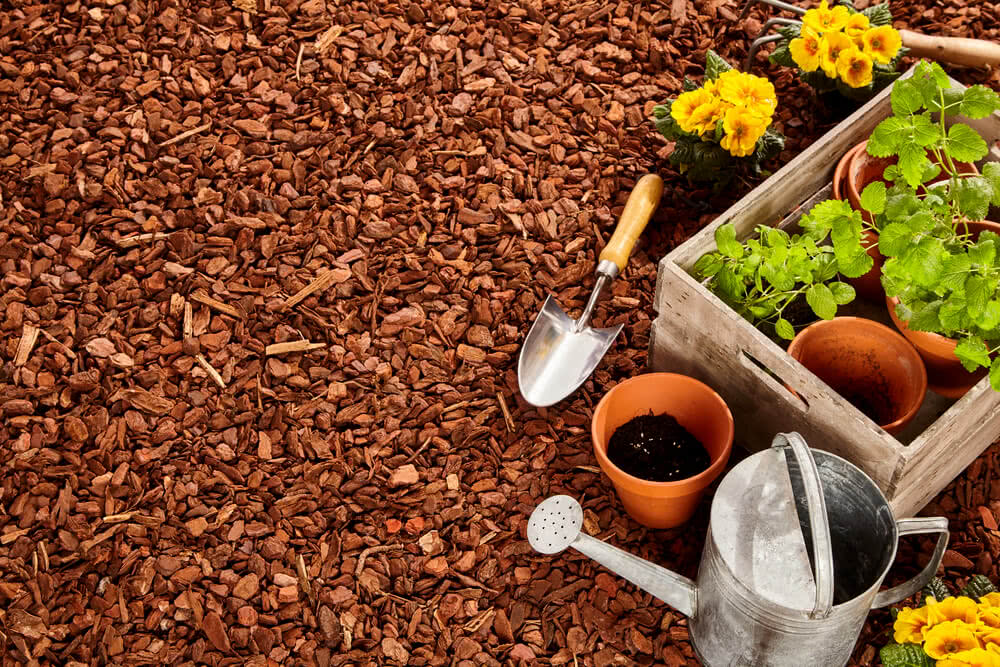To suffice the growing demand of a surplus population, yielding enough is difficult. Soil is made up of different properties that together form plants and crops. These properties include nutrients such as nitrogen, phosphorus, etc. It is important to restore the soil nutrients. This is where the process of mulching comes into the picture. In this blog, let’s dig into the mulching materials market, its importance, and growing demand in various regions worldwide.
Difference Between Mulch And Mulching
Mulch refers to any material that is used to cover the soil surface in gardening, agriculture, or landscapes. It can be composed of organic or inorganic substances, each offering unique benefits and functionalities. The primary purpose of mulch is to improve soil health and optimize plant growth by creating favorable microclimatic conditions around the plant roots.
Mulching is the process of applying mulch to the soil surface. It involves spreading a layer of mulch material around plants, shrubs, or trees. Mulching provides a multitude of advantages, such as conserving soil moisture, preventing weed growth, moderating soil temperature fluctuations, reducing erosion, and improving overall soil health.
Mulching Market
The market was valued at USD 4.11 billion in 2023 and is expected to grow at a CAGR of 7.6%, generating a revenue of USD 7.96 billion by 2032. The mulching materials market is witnessing significant growth due to several factors:
- Increasing awareness about the importance of sustainable landscaping practices
- Growing emphasis on water conservation and efficient irrigation techniques
- Rising demand for organic farming methods
- Expansion of the landscaping industry and urban green spaces
- Government initiatives promoting sustainable agriculture and horticulture practices
Types of Mulch
- Organic Mulch: Derived from natural sources, organic mulch includes materials like wood chips, straw, leaves, bark, and compost. It decomposes over time, enriching the soil with nutrients and improving its structure. Organic mulch provides insulation, retains moisture, and prevents weed growth. This segment accounted for the largest mulching materials market share in 2022.
- Inorganic Mulch: Inorganic mulch is made from materials that do not decompose easily, such as rubber, gravel, geotextiles, and plastic films. It offers long-lasting weed control, erosion prevention and helps retain soil moisture. Inorganic mulch is often used in high-traffic areas or where a long-term solution is desired.
Mulching Materials Usage
- Residential Applications: Mulching materials find wide usage in residential landscapes, including home gardens, flower beds, and lawns. Mulch helps retain soil moisture, reduce weed growth, and enhance the visual appeal of residential outdoor spaces. It provides an efficient and sustainable solution for homeowners to maintain healthy and vibrant gardens while minimizing water usage and weed control efforts.
- Gardens: Mulching plays a vital role in various types of gardens, including vegetable gardens, herb gardens, and ornamental gardens. By creating a protective barrier on the soil surface, mulch helps regulate soil temperature, prevent evaporation, and control weed growth, ultimately promoting healthier plant growth and higher yields in vegetable gardens, as well as improving the aesthetics of ornamental and herb gardens.
- Horticulture: Mulching materials have extensive applications in the horticulture industry. They are used in commercial nurseries, orchards, and greenhouses to enhance plant health and productivity. Mulch aids in moisture retention, weed suppression, and disease control, providing an optimal environment for the growth of various horticultural crops. Additionally, mulching helps protect delicate plants from extreme temperature fluctuations and reduces soil erosion, contributing to the overall success of horticultural operations.
Reviving The Soil
The mulching materials market is witnessing a surge in demand as more individuals and industries recognize the importance of sustainable landscaping practices and the benefits of mulching. With its ability to conserve water, suppress weed growth, and enhance soil health, mulch has become an indispensable tool for gardeners, farmers, and landscapers worldwide.
As the market continues to expand, manufacturers are innovating with new materials and techniques to meet the evolving needs of customers. Whether it’s organic or inorganic mulch, the market offers a range of options for different applications and preferences. The future of the mulching materials market looks promising, driven by environmental consciousness, government initiatives, and the growing need for sustainable land management practices.

